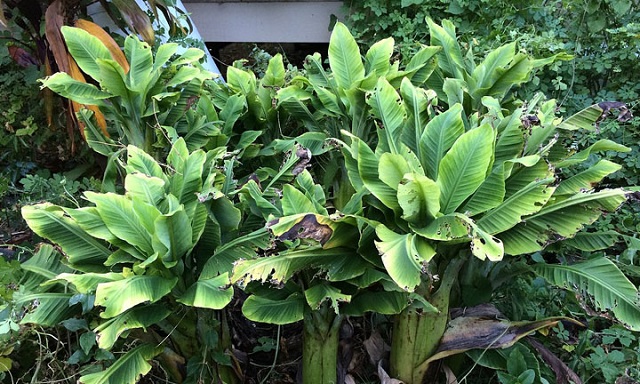
Kasese, Uganda | THE INDEPENDENT | Farmers in Kasese District are counting losses following the outbreak of the Banana Bunchy Top Virus (BBTV) disease.
The disease was detected in 2020 and in July, the Ministry of Agriculture raised a red flag when the disease caused havoc on banana plantations in West Nile, Rwenzori and Tooro regions.
An infected plant presents with severe stunting, narrow leaves, chlorotic leaf margins, and dark green streaks on petioles and midribs. The affected plant also shows a rosette-like or bunchy and choked appearance. Diseased plants rarely produce fruit and when they do, the fruit is stunted and twisted.
The disease is suspected to have spread to Uganda from the neighboring Democratic Republic of Congo (DRC) and Rwanda.
In Kasese so far five sub-counties of Bwera, Isango, Karambi, Nyakiyumbu, and Kitholhu have been hit by the disease.
Moris Mohindo an extension worker for Karambi and Ihandiro Sub Counties says that the disease could threaten food security in the area. He says while they are advising farmers to get rid of the infected plantation as the only viable solution, many are resistant.
Anatos Bwambale, a farmer from Karambi Sub County says smallholder farmers continue to lack access to healthy planting materials, information on pests and diseases, and other input necessary to control the emergence and spread of diseases like the new banana disease.
He says that he was initially getting over 600,000 Shillings from his plantation but in 2018, he started to notice a strange disease that has brought down his returns to 20,000 Shillings per month.
“I started planting this banana plantation in 2001, they were good and had picked them from Dr. Chrispus Kiyonga and they were giving me good return of about 600, 000 shillings each month but when it good to 2018, I started witnessing a strange disease that caused a decline in production ….” Bwambale said.
Pascal Mihindo says his production has reduced drastically in the last three years after being invaded by the disease. He asks the government to urgently respond because banana is one of the key commercial product.
Mbambu Deniza, a farmer says the family has run out of food after their half-acre planation was completely destroyed by the disease.
Joab Tugume, senior agriculture, inspector quarantine and import regulation in the Ministry of Agriculture says that the Ministry is raising awareness regarding the spread and control measures of the disease.
According to the 2009 findings by the Uganda National Bureau of Statistics, the western region produces up to 68 percent of the country’s banana output.
With the region still dealing with the re-occurrence of banana wilt disease, the new banana disease poses a serious threat of hunger, poverty, and malnutrition in the region.
 The Independent Uganda: You get the Truth we Pay the Price
The Independent Uganda: You get the Truth we Pay the Price




Ministry of agriculture should intervene and solve the problem.